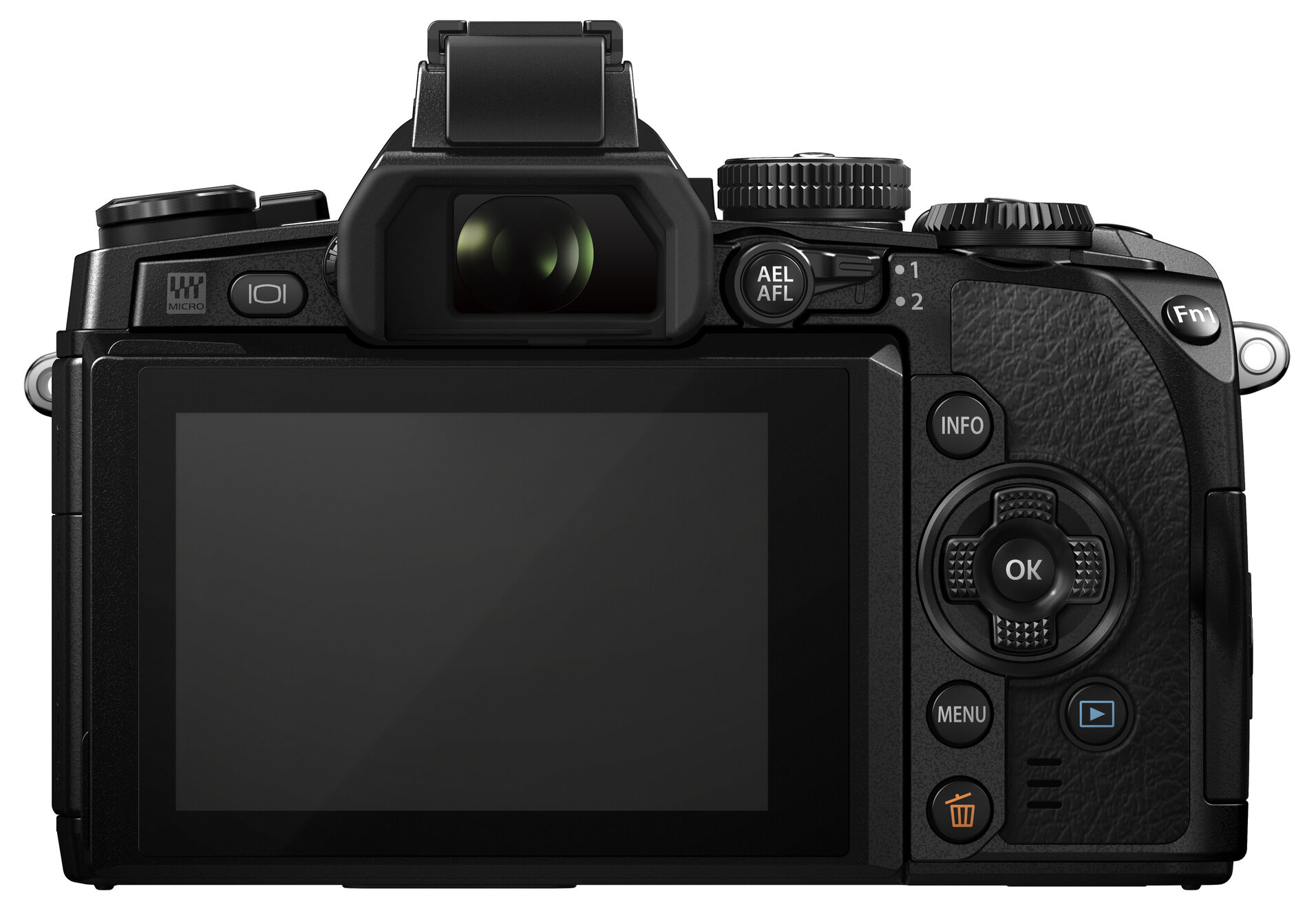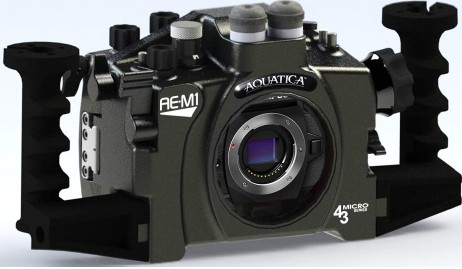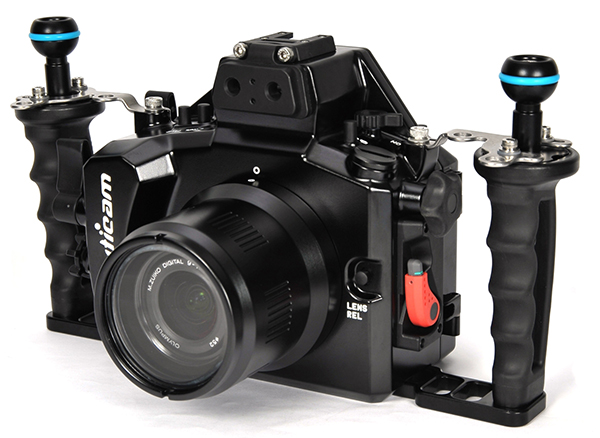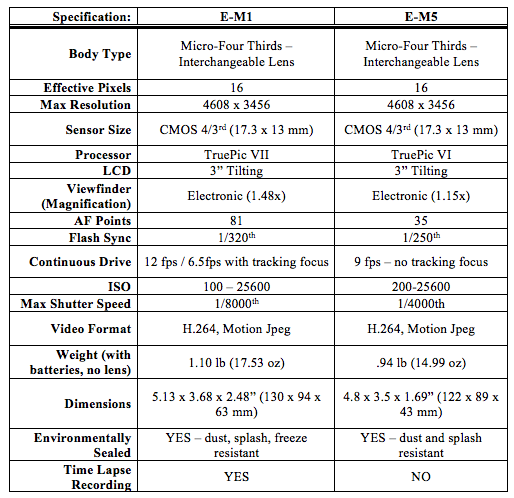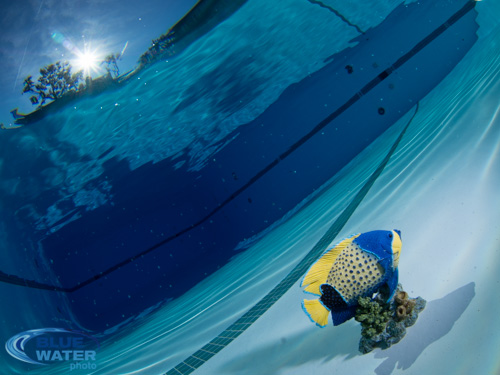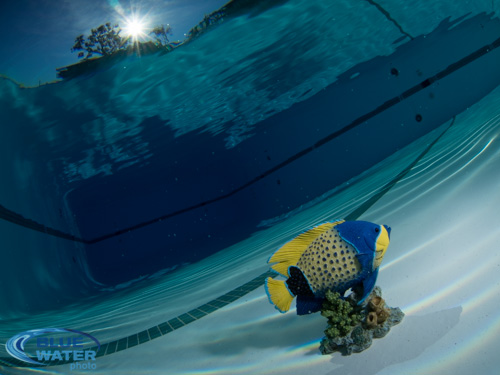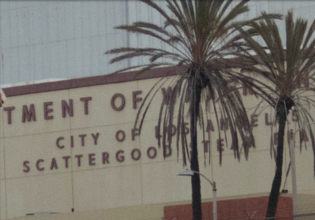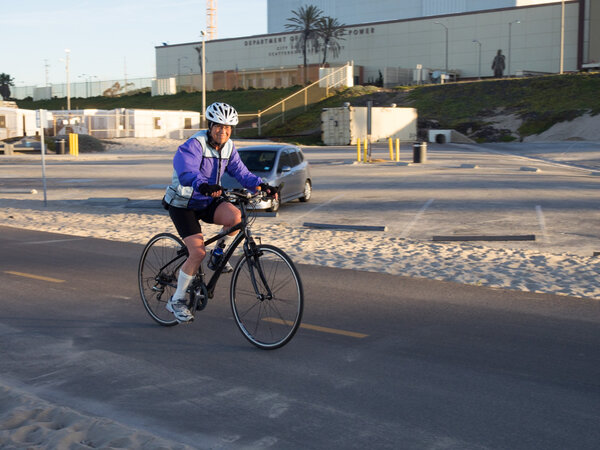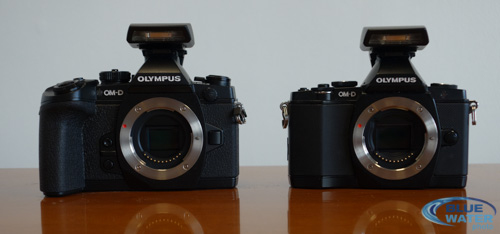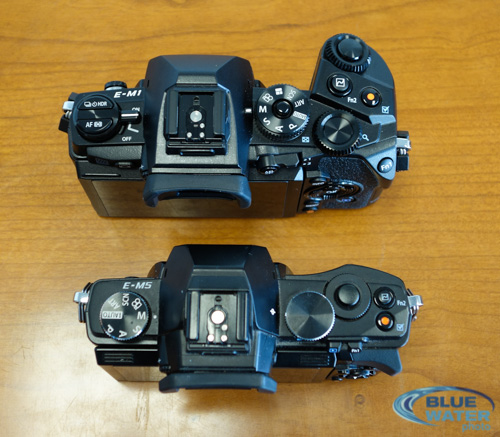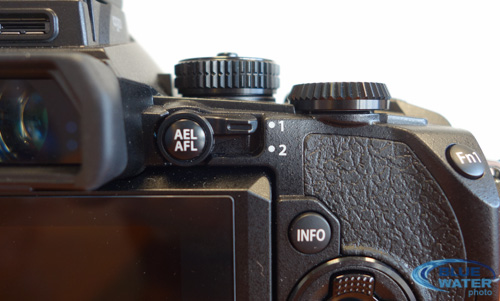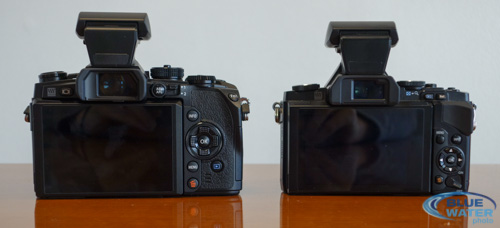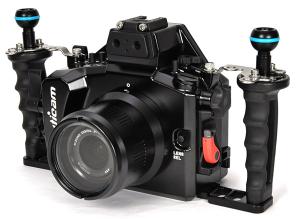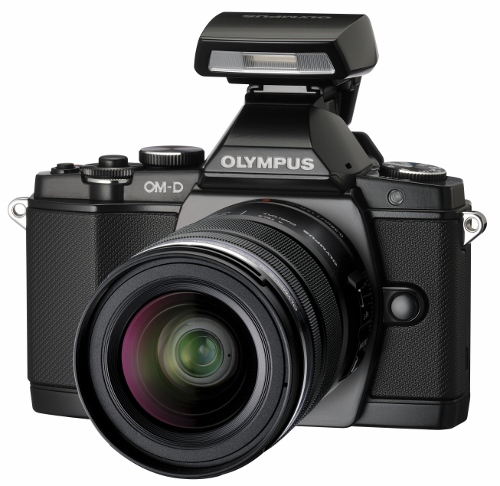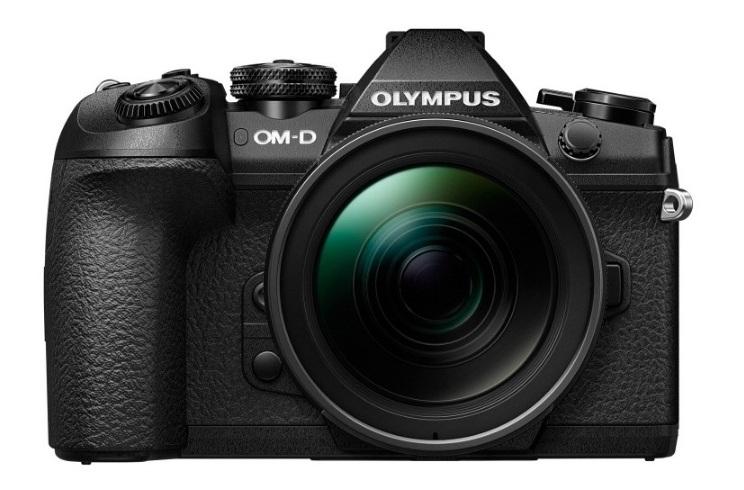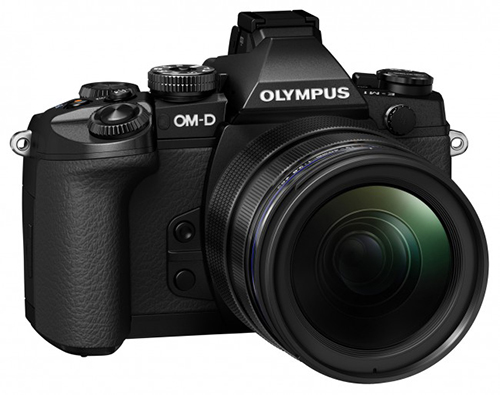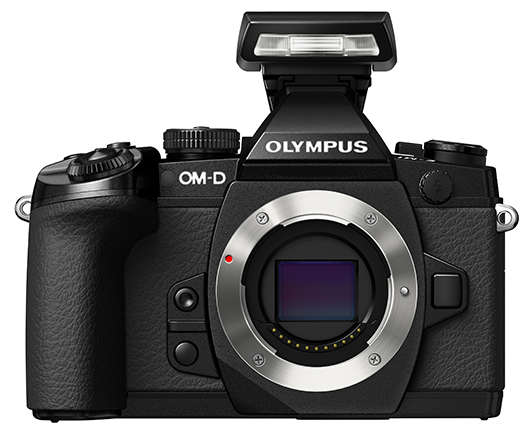
Last September Olympus announced the next release in the OM-D line of micro four-thirds cameras. The first camera, the OM-D E-M5, was released in March 2012 and surpassed all expectations, becoming one of their most popular cameras to date. The E-M5 works wonderfully underwater, providing high quality images and dSLR-like controls in a smaller, compact body.
The new E-M1 was designed with the professional shooter in mind. This camera strives to further blur the line between mirrorless and dSLR cameras. This new body is not a replacement for the E-M5, but a new flagship mirrorless camera for Olympus. It offers improvements across the board including a more SLR-like body style, a “buttons for everything” approach, improved processor and even more flexibility for customization.
OM-D E-M1 Quick Specs
-
16 Megapixels
-
Micro 4/3 Lens Mount
-
Flash Sync Speed: 1/320s
-
Max ISO: 25,800
-
Max Shutter Speed: 1/8000
Jump to underwater housings section
The new E-M1 has the same micro four-thirds sensor as the E-M5, with an effective 16 mega pixels. It has been improved though, with the new TruePic VII processor giving better image processing and improving quality overall.
The big change with this camera comes with the innovative new auto focusing modes. The new “Dual Fast AF” utilizes both Phase and Contrast detection auto focus depending on what AF mode and what type of lens is on the camera. For most shooters this means that when using the native Micro Four-Thirds lenses, you have improved contrast detection autofocus in S-AF mode. In C-AF, the camera uses both contrast and phase detection allowing for faster continuous focusing and focus tracking at 6.5fps burst mode. With Phase detection, the camera also focuses much more quickly with the original Olympus Four-Thirds lenses from their dSLR line. The contrast detection grid has been increased to 81 focus points that are smaller and cover more of the total image. When using phase detection there are 37 AF points.
Olympus has brought back the ISO100 that was available in the original PEN E-PL1. They list it in the camera as ISO LOW, and the E-M1 can shoot up to ISO 25,600. It has an increased max shutter speed of 1/8000th, and most exciting, a new increased flash sync speed of 1/320th.
The overall body style has changed significantly, moving away from the slim look of the E-M5 and other PEN models. The E-M1 looks and handles much more like a dSLR camera with a large grip and more buttons for easy control and customization of the camera functions.
A new larger electronic viewfinder with more magnification makes composing your images even easier. This viewfinder is as close to an optical viewfinder as I have seen in any mirrorless camera. The camera body is weather sealed – dust proof, water resistant and freeze proof – making it a very versitle and rugged set up. Olympus is also beginning to release the PRO line of micro four-thirds lenses that will offer new and better options than the current line available.
For a complete look at the specifications check out our E-M1 Initial Thoughts article.
Real Time Use
I have been shooting the E-M5 for the past year and a half, so I’m already familiar with Olympus’ menu set up and controls. This made it was a breeze to switch to using the new E-M1. The main improvement I found topside is the change in body style, allowing a much better grip (without having to puchase the optional extended grip). Overall, the two cameras feel very similar. The biggest change is the addition of more customizable buttons. Taking a “buttons for everything” approach with this camera Olympus is providing the shooter with the ability to create a setup for extremely streamlined shooting – provided you take the time to set the functions where you want them and can remember what button controls which function. Underwater I see this as being extremely useful since no one wants to spend extra time scrolling through menus to find and change settings, provided access for all of these buttons is available with the UW housings.
Just like with the E-M5, the two top dial controls make it easy to adjust settings. The buttons on the camera are well placed for easy access and the overall layout of the system makes sense. The 2 x 2 control system is neat, allowing for quick changes. Simply switch the lever between 1 and 2 and the two control dials change from operating the Aperture and Shutter Speed to controlling ISO and White Balance (and of course, these options can be customized).
Aquatica OM-D E-M1 Housing
The Aquatica housing construction is excellent. The finished aluminum housing is anodized and painted with a rough matte black finish designed to stand up to salt water use over time. Spring tension in the buttons and controls feels strong. All the controls worked great and the camera was easy to install in the housing with a tray that slides onto two rails and locks in place.
Aquatica includes high quality molded grips the feel great and are positioned well from the housing. On a side note these grips are also easy to remove which makes packing for travel a breeze! Similar to other aluminum housings they have moved the control for the AEL/AFL button from the back of the housing to the side and made that control a lever vs a standard button. This makes it ideal to use for splitting out the focus lock, a popular camera set up for macro.
The shutter lever is large and sensitive, making it easy to lock focus using the half shutter press method. The two main dials – typically used for shutter speed and aperture control are easy to turn making settings changes a breeze. All camera functions are accessible and fiber optic cables easily plug directly into the holes on the top of the housing. On the left of the housing the zoom control knob is large and easy to manipulate allowing for quick and smooth zooming.
Nauticam OM-D E-M1 Housing
Nauticam has released the NA-EM1 housing for the new E-M1 camera. They took a new approach with this camera in treating it more like a dSLR. The housing includes built-in handles, a dSLR style port release, improved camera tray, nicer zoom knob and of course, well thought out placement of controls to make using it underwater a breeze. The shutter release has been redesigned to work smoothly when holding on to the handles, and (just like the dSLR housings) it is a larger lever style. In addition, Nauticam made the AEL/AFL control a lever to take advantage of customizing features like focus lock using that control.
The control dials are well placed for easy use and shooting one handed is not difficult. Overall buoyancy of just the camera and housing (with 60mm macro lens & port) is just slightly negative, but not bad.
With the E-M5 housing, I would hold on directly to the housing (vs the right handle), so I found it took a little adjusting to holding onto the handles and being able to easily control everything. With the new handle design the rear buttons for accessing the menu are slightly further away, making it necessary to have both hands on the rig when doing any menu changes. However, for shooting and composition, everything that is needed can be accessed with one hand (if programmed to specific buttons).
Olympus OM-D E-M1 Housing
The Olympus housing is designed exactly like the E-M5 underwater housing, with the black polycarbonate body and red front on the port. One big improvement is an updated port system which allows for easy port changing. Similar to other E-M1 housings the port is not included with the housing. There are a variety of options available for ports, many of which require an adapter. Olympus offers an adapter to use their original dSLR ports with the OMD housing and Zen offers an adapter to use their PEN ports with the OMD housing giving a variety of options.
The shutter lever is sensitive and easy to lock focus. They tier the buttons making them easier to manipulate without accidentally pressing the wrong one. Zoom control is easy to use, however the positioning of the two main control dials is not great, making it more difficult to make fast settings changes with one hand. The housing is designed to be used with the flash in the “down” position, so you do have to assign the UW mode to one of the Fn buttons to engage this, luckily with the E-M1 there are alot of Fn buttons to choose from!
E-M1 Camera Compared to the E-M5 with Image Tests
Tech Specs:
I took both cameras in housings into the pool and also did several tests topside to flush out the real differences in performance between the E-M5 and E-M1. While the E-M1 has definite improvements over the E-M5, the E-M5 still held its own, and wins on overall size and affordability.
Image Quality
Dynamic Range – The E-M1 has a greater dynamic range than the E-M5, with slightly more detail in both highlights and shadows before they clip to white or black. Notice the ability to shoot up to 1/320th with the EM-1 can allow for more flexibility in gaining those nice sunbursts from bright clear water.
E-M5 @ ISO200 F22 1/250th
E-M1 @ ISO200 F22 1/320th
Flash Sync Speed
The E-M1 also holds an advantage over the E-M5 with the increased flash sync shutter speed of 1/320th vs the 1/250th. While 1/250th works great for most things, in bright clear water the additional speed really helps for creating better sunballs. I tested this in the pool with the 8mm Panasonic Fisheye Lens. While the E-M5 still does a good job, there is slightly more detail in the E-M1 sunball thanks to the faster sync shutter speed.
100% Crop of Sunburst from E-M1 wide shot above (1/320th)
100% Crop of Sunburst from E-M5 wide shot above (1/250th)
ISO Range
The E-M1 promised improvements in the overal quality of higher ISOs and it delivers. Paired against the E-M5 you can see that it retains more detail and slightly less grain as the ISO count rises. The differences are slight, however. Both cameras still produce a lot of noise after ISO 800 and the image quality degrades quickly as the ISO increases.
Below: 100% Crop of EM1 (top) & E-M5 (bottom) @ ISO200
Below: 100% Crop of EM1 (top) & E-M5 (bottom) @ ISO800
Below: 100% Crop of EM1 (top) & E-M5 (bottom) @ ISO1600
Below: 100% Crop of EM1 (top) & E-M5 (bottom) @ ISO6400
Focus Speed
Low Light Focus – Macro
The new E-M1 definitely focuses faster than the E-M5. I tested the focusing with the 14-42mm kit lens topside and also did some tests with the 60mm Macro lens. The 60mm lens often has the more trouble focusing, especially when changing focus from a very close subject to something further away. Underwater I tested the focus in a shadowed area of the pool on a monochromatic drain with the hopes of providing a more difficult-to-focus-on subject. While both cameras sometimes experienced focus hunt when doing this, the E-M1 was able to lock focus much quicker, often with zero hunting. During topside tests in a dark room the EM-1 locked focus on average 1/10th of a second faster than the EM-5.
Tracking Focus
A big improvement that Olympus states with the E-M1 stems from the new on-chip phase detection AF. When using any native Micro Four-Thirds lens with the camera in continuous AF mode, the E-M1 utilizes both Phase and Contrast detection AF, allowing the camera to maintain focus on a moving subject. This only works with the Low burst mode on the camera, which shoots at about 6fps. Just like the E-M5, the High rate burst mode locks focus on the first frame and does not adjust for subsequent images. I tested the continuous focus on cyclists down the beach path as they rode by me. My first impression was that there is still room for improvement with the continuous focus overall. The camera kept refocusing prior to me pushing the shutter down completely, often locking focus then going out of focus before I was ready to take the photo and resulting in my set of exposures being completely out of focus. The typical results I saw were that several of the series would be out of focus and several would be in focus. However, compared to the E-M5, which locks focus and does not refocus at all, this is a big improvement. Below is the main image of one of the cyclists, followed by 100% crops of the key frames where focus was best.
Cyclist riding by, I tracked focus on her face as best as possible (ISO200 F8, 1/320th)
Frame 1 of the series
Frame 4 of the series
Frame 6 of the series
Physical Differences: E-M1 vs. E-M5
Front view of OMD comparision. E-M1 (left) is slightly taller than E-M5 (right)
Immediately it’s easy to see that the E-M1 is bigger than the E-M5. It is still much smaller than a dSLR, however. It is slightly taller but the most noticeable size difference is the width. This is due to the included molded grip that comes standard on the camera. The E-M1 is .16 lbs (2.54 oz) heavier than the E-M5. When shooting topside these size differences are not that noticeable, however it does translate to a larger housing underwater.
Nauticam size comparison (left to right) E-M5, E-M1, D7100
From the picture above you can easily see that the Nauticam housings for the E-M1 and E-M5 are similar in size (when not counting the handles). Both housings are significantly smaller than your average dSLR – like the Nikon D7100 housing pictured.
Control Placement
The control placements, dials and buttons are very similar with a few major changes. Both cameras utilize the dual control dial set up, allowing the user to easily change both aperture and shutter speed with a single dial. The E-M5 goes a step further integrating a 2×2 system which allows those two control dials to change to difference functions at the flip of a switch.
Top view of OMD comparision. E-M1 (left) is roughly the same length as the E-M5 (right) but is thicker overall – mostly due to the larger molded grip.
The mode dial on the E-M1 has been moved to the right side of the viewfinder and now includes a mode lock like many dSLRs. On the left side where the mode dial is on the E-M5 we now have the On/Off switch and direct controls for the HDR and shooting drive modes as well as the AF and metering modes. Push either of these buttons and the two controls dials can now scroll through those settings.
Bigger Buttons
One major complaint about the E-M5 buttons is how tiny they are. Olympus has rectified this issue. Buttons on the E-M1 are about twice as large on the E-M1 and better placement makes them easier to use accurately. For example, Olympus moved the Playback button down below the multi-controller and away from the Fn1 button so there is no longer issue of accidentally engaging playback when trying to use the Fn1. Additional buttons allow you to assign more direct functions to the camera controls, which improve the overall flow of using the camera.
Price
The E-M5 definitely wins in price over the more expensive EM-1. Currently the E-M1 is being sold body only at $1399. The EM-5 comes body only for only $899, and with your choice of 14-42mm kit lens for $1099, or 12-50mm kit lens for $1299 – still less than E-M1 body.
Conculsion
Overall, this looks to be a great camera for both topside and underwater use. Quick focusing, high quality images with a wealth of customization ability and being backed by a large selection of lenses make the whole system a great choice.
VS. the E-M5
If you are torn between which of the two OM-D versions to choose, or thinking about upgrading from your current E-M5 it can be a tough choice. If size and budget are not an issue look at going with the E-M1, you’ll gain some image quality and focus speed as well more customization options. That said, the E-M5 still offers impressive results for a fraction of the cost in a smaller size.
Olympus E-M1 Underwater Housings
The Nauticam E-M1 housing, Aquatica E-M1 housing, Recsea E-M1 housing and Olympus E-M1 housings are all currently on the market.
This is a short housing guide. For full details, ports and in-water experience, check out our complete:
Nauticam OM-D E-M1 underwater housing
The Nauticam E-M1 housing features very advanced engineering, moving many controls right to the divers’ fingertips. A wide range of ports, great port lock system and optional vacuum leak detect system are other key features. It supports a wide range of lenses including the new Olympus 7-14mm F2.8 lens.
Aquatica OM-D E-M1 underwater housing
The Aquatica E-M1 housing is a robust housing, built for serious underwater photographers shooting in tough conditions. The housing has a serious finish designed to look great and hold up even after hundreds of dives. A wide range of ports, optional vacuum leak detect system and carefully thought out video controls are other key features.
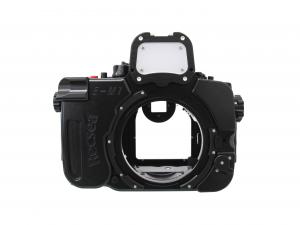
The Recsea E-M1 housing is a great choice for divers who want an aluminum housing at a lower price than other aluminum housings. It’s also the smallest, most compact housing available for the E-M1, built with the quality Recsea is known for.
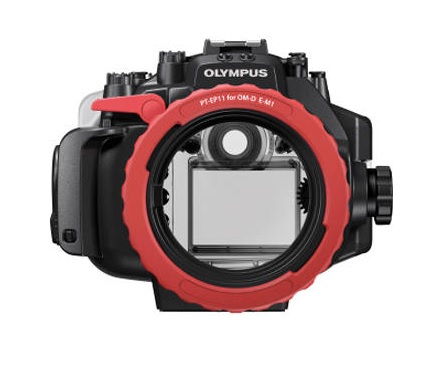
The Olympus E-M1 housing presents a good value for the money. The plastic build, while not as durable or small as the aluminum housings, is very lightweight and easy to travel with, offering access to all main camera controls, plus a wide port selection and other accessories. Port changes are much easier than the Olympus “PEN” housings.




